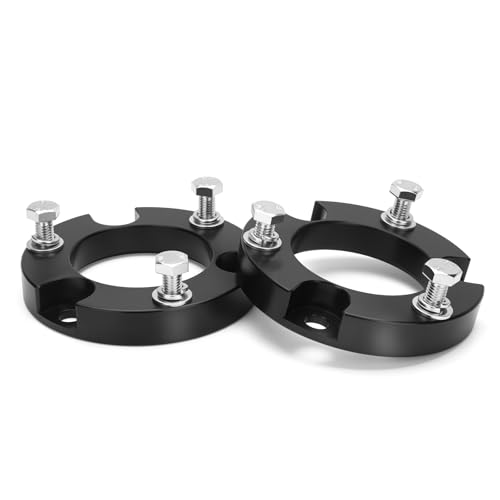When modifying a Toyota 4Runner, there are many things to consider. The type of lift, the brand, the height, and the cost are a few essential factors to consider. It’s important to understand each option’s merits and demerits and make an informed decision that’s right for you and your vehicle. This article’ll explore all the factors to consider before lifting your Toyota 4Runner.

Factors To Consider Before Lifting Your Toyota 4runner
1. Why The Lift?
First, let’s talk about the purpose of the lift. Why do you want to lift your 4Runner? Is it for aesthetic reasons, like achieving a specific look? Or is it for practical reasons, like improving your off-road capability? Knowing the purpose will help you choose the right type of lift and make other decisions about modifications. Are you looking for a lift mainly for aesthetic reasons or practical reasons?
Consider a body lift if you’re lifting your 4Runner, mainly for aesthetic reasons. A body lift raises the vehicle’s body away from the frame, creating more space between the tires and wheel wells. This can allow you to install larger tires and achieve a particular look. However, a body lift does not increase ground clearance and may affect handling and fuel economy.
Consider a suspension lift if you’re lifting your 4Runner mainly for practical reasons. A suspension lift raises the entire vehicle by replacing the springs and shocks with taller versions. This increases ground clearance, allowing you to navigate more challenging terrain.
Suspension lifts can also improve handling and towing capacity but may also decrease fuel economy. In addition to considering the purpose of the lift, you’ll also need to consider the cost. The cost of a lift kit for your truck can vary widely, hinging on the type of kit, the brand, and the installation. Body lift kits are generally less expensive than suspension lift kits. Still, they may not provide all the benefits you’re looking for. It’s also important to consider the cost of installation, as well as any other modifications you may need to make, such as new wheels and tires.
SEE ALSO: Is a 4Runner a Truck?
2. The cost
Cost is a significant consideration when it comes to lifting your 4Runner. There are several cost factors to keep in mind, including the cost of the lift kit itself, the cost of installation, and the cost of any additional modifications you may need to make.
The cost of the lift kit will vary depending on the brand, the type of lift, and the size of the lift. For example, a body lift kit typically costs less than a suspension lift kit. And a 2-inch lift will typically cost less than a 4-inch lift. Getting an accurate estimate from a reputable installer before deciding is essential.

3. The pros and the cons
There are both pros and cons to consider when it comes to lifting your 4Runner. On the plus side, a lift can improve off-road performance, give you more ground clearance, and allow for larger tires. It can also give your vehicle a more aggressive, rugged look. However, there are also some potential downsides to consider. A lifted vehicle may have a harsher ride quality, lower fuel economy, and require additional maintenance. It’s essential to weigh the pros and cons before making a decision. Are you comfortable with the trade-offs that come with lifting your 4Runner?
Next, we’ll talk about insurance. Modifying your 4Runner may affect your insurance policy. Some insurance companies may raise your rates or cancel your policy if you make specific modifications. Be sure to contact your insurance company before you make any changes to your vehicle. They may require you to get a special endorsement on your policy or even switch to a different type of policy. Do you know how your modifications may affect your insurance coverage?
Moving on, let’s talk about the impact on your driving experience. A suspension lift will change how your 4Runner handles; you may need to get used to the new feel. A body lift will not change the driving experience as much. Still, it may affect fuel economy and handling in certain situations. How comfortable are you with making changes to the way your 4Runner drives?
4. The Garage height and Frequently Plied Routes
Another essential factor to consider when deciding on the height of your lift is whether it will fit in your garage or the parking structures you regularly use. A taller lift may not be a good option if you have a low-clearance garage or parking garage. It’s also important to consider the impact on your daily driving. A taller lift may make navigating drive-thrus, parking lots, and other tight spaces more difficult. Consider how a taller vehicle might affect your everyday driving.
Final Words
Lifting your Toyota 4Runner is a big decision but it can be fun and rewarding. With the correct information, you can make an informed choice, resulting in a vehicle that looks and performs how you want it to. Remember to consider all the above-mentioned factors we’ve discussed and consult with experts if you’re unsure what to do. You can have the lifted 4Runner of your dreams with research and planning. Are you ready to decide on lifting your 4Runner?











